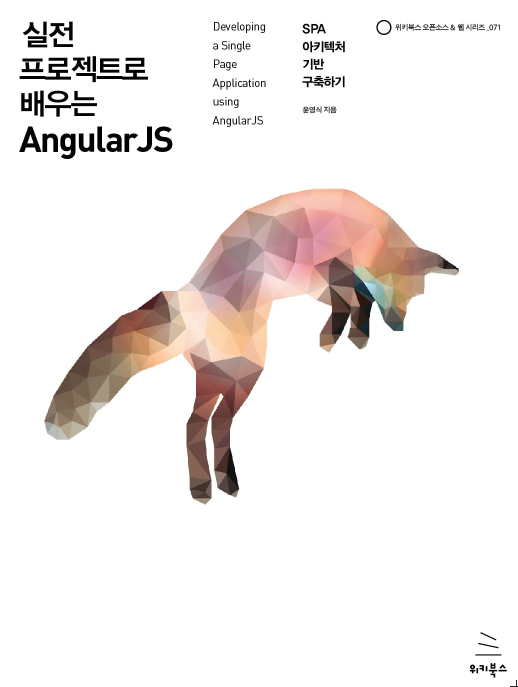Multinomial Classification에 사용하는 Softmax Classification을 Tensorflow로 구현하는 강좌를 정리한다.
Softmax Function
0.7 + 0.2 + 0.1 확률(Probabilities)값을 더하면 1이 된다.
Cost Function
Loss function 구현하고 minize cost로 GradientDescentOptimizer를 사용한다.
Tensorflow 실습
One-Hot Encoding은 하나의 자리만 1을 갖는다. 예) y_data
import tensorflow as tf
tf.set_random_seed(777) # for reproducibility
x_data = [[1, 2, 1, 1],
[2, 1, 3, 2],
[3, 1, 3, 4],
[4, 1, 5, 5],
[1, 7, 5, 5],
[1, 2, 5, 6],
[1, 6, 6, 6],
[1, 7, 7, 7]]
y_data = [[0, 0, 1],
[0, 0, 1],
[0, 0, 1],
[0, 1, 0],
[0, 1, 0],
[0, 1, 0],
[1, 0, 0],
[1, 0, 0]]
X = tf.placeholder("float", [None, 4])
Y = tf.placeholder("float", [None, 3])
nb_classes = 3 #클래스의 갯수
# Shape
# 4 = X값, nb_classes 출력값
W = tf.Variable(tf.random_normal([4, nb_classes]), name='weight')
b = tf.Variable(tf.random_normal([nb_classes]), name='bias')
# tf.nn.softmax computes softmax activations
# softmax = exp(logits) / reduce_sum(exp(logits), dim)
hypothesis = tf.nn.softmax(tf.matmul(X, W) + b)
# Cross entropy cost/loss
cost = tf.reduce_mean(-tf.reduce_sum(Y * tf.log(hypothesis), axis=1))
optimizer = tf.train.GradientDescentOptimizer(learning_rate=0.1).minimize(cost)
# Launch graph
with tf.Session() as sess:
sess.run(tf.global_variables_initializer())
#Hypothesis에 대해 학습하여 최적의 W,b를 구함
for step in range(2001):
sess.run(optimizer, feed_dict={X: x_data, Y: y_data})
if step % 200 == 0:
print(step, sess.run(cost, feed_dict={X: x_data, Y: y_data}))
print('--------------')
# Testing & One-hot encoding: 예측을 하게 한다. argmax에서 최강자를 골라준다.
a = sess.run(hypothesis, feed_dict={X: [[1, 11, 7, 9]]})
print(a, sess.run(tf.argmax(a, 1)))
print('--------------')
b = sess.run(hypothesis, feed_dict={X: [[1, 3, 4, 3]]})
print(b, sess.run(tf.argmax(b, 1)))
print('--------------')
c = sess.run(hypothesis, feed_dict={X: [[1, 1, 0, 1]]})
print(c, sess.run(tf.argmax(c, 1)))
print('--------------')
all = sess.run(hypothesis, feed_dict={X: [[1, 11, 7, 9], [1, 3, 4, 3], [1, 1, 0, 1]]})
print(all, sess.run(tf.argmax(all, 1)))
==> 결과 1 0 2
[[1.3890432e-03 9.9860197e-01 9.0612402e-06]
[9.3119204e-01 6.2902056e-02 5.9058843e-03]
[1.2732767e-08 3.3411323e-04 9.9966586e-01]] [1 0 2]
Fancy Softmax Classifier
cross_entropy, reshape, one-shot encoding을 사용하여 좀 더 Fancy하게 Softmax Classifier를 만든다.
- score(logit)을 구함 => softmax function을 거치면 확률값이 나옴. 식: hypothesis tf.nn.softmax(tf.matmul(X,W))
- hypothesis를 Cross entropy cost/Loss 를 만듦. 1)번 수식을 2)번 수식처럼 단순화함. Logits을 사용함.
동물원 예제
- 6가지 종류의 동물이 있다. 이것을 one hot을 이용해 가설을 학습시킨다.
- tf.one_hot(...)을 호출하면 한차원 더 생기고 이것을 원위치 시키려면 tf.reshape(...)을 호출한다.
import tensorflow as tf
import numpy as np
tf.set_random_seed(777) # for reproducibility
# Predicting animal type based on various features
xy = np.loadtxt('data-04-zoo.csv', delimiter=',', dtype=np.float32)
x_data = xy[:, 0:-1]
y_data = xy[:, [-1]]
print(x_data.shape, y_data.shape)
nb_classes = 7 # 0 ~ 6
X = tf.placeholder(tf.float32, [None, 16])
Y = tf.placeholder(tf.int32, [None, 1]) # 0 ~ 6
Y_one_hot = tf.one_hot(Y, nb_classes) # one hot
print("one_hot", Y_one_hot)
Y_one_hot = tf.reshape(Y_one_hot, [-1, nb_classes])
print("reshape", Y_one_hot)
W = tf.Variable(tf.random_normal([16, nb_classes]), name='weight')
b = tf.Variable(tf.random_normal([nb_classes]), name='bias')
# tf.nn.softmax computes softmax activations
# softmax = exp(logits) / reduce_sum(exp(logits), dim)
logits = tf.matmul(X, W) + b
hypothesis = tf.nn.softmax(logits)
# Cross entropy cost/loss
cost_i = tf.nn.softmax_cross_entropy_with_logits(logits=logits, labels=Y_one_hot)
cost = tf.reduce_mean(cost_i)
optimizer = tf.train.GradientDescentOptimizer(learning_rate=0.1).minimize(cost)
# 정확도를 구한다.
prediction = tf.argmax(hypothesis, 1)
correct_prediction = tf.equal(prediction, tf.argmax(Y_one_hot, 1))
accuracy = tf.reduce_mean(tf.cast(correct_prediction, tf.float32))
# Launch graph
with tf.Session() as sess:
sess.run(tf.global_variables_initializer())
# 학습을 수행한다
for step in range(2000):
sess.run(optimizer, feed_dict={X: x_data, Y: y_data})
if step % 100 == 0:
loss, acc = sess.run([cost, accuracy], feed_dict={X: x_data, Y: y_data})
print("Step: {:5}\tLoss: {:.3f}\tAcc: {:.2%}".format(
step, loss, acc))
# Let's see if we can predict: 잘 예측되는지 확인한다.
pred = sess.run(prediction, feed_dict={X: x_data})
# y_data: (N,1) = flatten => (N, ) matches pred.shape
for p, y in zip(pred, y_data.flatten()):
print("[{}] Prediction: {} True Y: {}".format(p == int(y), p, int(y)))
동물을 특징 짖는 여러 가지 X 값에 대한 결과 Y값을 가지고 있을 때, 즉 Multinomial Classification을 할 때 Fancy Softmax Classifier를 사용한다.
참조
- 김성훈교수님의 Softmax Classification을 Tensorflow로 구현하는 강좌
- 김성훈교수 강좌 정리한 글-1, 잘 정리한 글-2, 잘 정리한 글-3
'Deep Learning > NN by Sung Kim' 카테고리의 다른 글
| [Training & Testing] Data set 구분 (0) | 2018.07.05 |
|---|---|
| [Tips] Learning rate, data preprocessing, overfiting (0) | 2018.07.05 |
| [Mutinomial Classification] 개념 (0) | 2018.07.04 |
| [Logistic classification] 개념 (0) | 2018.07.04 |
| [Linear Regression] Multi Variable 개념 및 실습 (0) | 2018.07.04 |








